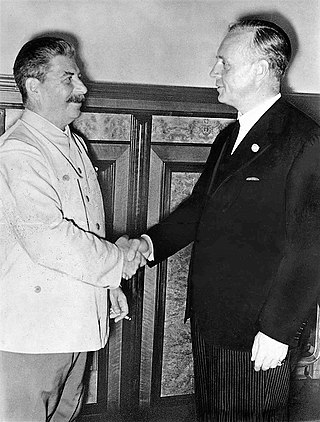
The Molotov–Ribbentrop Pact, officially the Treaty of Non-Aggression between Germany and the Union of Soviet Socialist Republics, was a non-aggression pact between Nazi Germany and the Soviet Union with a secret protocol that partitioned Central and Eastern Europe between them. The pact was signed in Moscow on 23 August 1939 by German Foreign Minister Joachim von Ribbentrop and Soviet Foreign Minister Vyacheslav Molotov. Unofficially, it has also been referred to as the Hitler–Stalin Pact, Nazi–Soviet Pact, or Nazi–Soviet Alliance.

George VI was King of the United Kingdom and the Dominions of the British Commonwealth from 11 December 1936 until his death on 6 February 1952. He was also the last Emperor of India from 1936 until the British Raj was dissolved in August 1947, and the first head of the Commonwealth following the London Declaration of 1949.
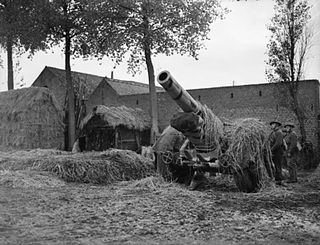
The Phoney War was an eight-month period at the start of World War II during which there was only one limited military land operation on the Western Front, when French troops invaded Germany's Saar district. Nazi Germany carried out the invasion of Poland on 1 September 1939, and the Phoney period began two days later with the declaration of war by the United Kingdom and France against Germany, after which little actual warfare occurred, and ended with the German invasion of France and the Low Countries on 10 May 1940. Although there was no large-scale military action by Britain and France, they did begin some economic warfare, especially with the naval blockade and shut down German surface raiders. They created elaborate plans for numerous large-scale operations designed to cripple the German war effort. These included opening an Anglo-French front in the Balkans, invading Norway to seize control of Germany's main source of iron ore, and an embargo against the Soviet Union, which supplied Germany's main source of oil. By April 1940, the lone execution of the Norway plan was considered inadequate to stop the German offensive.
These are the public holidays observed in Ireland. Public holidays in Ireland may commemorate a special day or other event, such as Saint Patrick's Day or Christmas Day. On public holidays, most businesses and schools close. Other services, for example, public transport, still operate but often with reduced schedules.

The 1939–1940 New York World's Fair was a world's fair held at Flushing Meadows–Corona Park in Queens, New York City, United States. It was the second-most expensive American world's fair of all time, exceeded only by St. Louis's Louisiana Purchase Exposition of 1904. Many countries around the world participated in it, and over 44 million people attended its exhibits in two seasons. It was the first exposition to be based on the future, with an opening slogan of "Dawn of a New Day", and it allowed all visitors to take a look at "the world of tomorrow".

The Invasion of Poland, also known as the September Campaign, Polish Campaign, War of Poland of 1939, and Polish Defensive War of 1939, was a joint attack on the Republic of Poland by Nazi Germany, the Slovak Republic, and the Soviet Union; which marked the beginning of World War II. The German invasion began on 1 September 1939, one week after the signing of the Molotov–Ribbentrop Pact between Germany and the Soviet Union, and one day after the Supreme Soviet of the Soviet Union had approved the pact. The Soviets invaded Poland on 17 September. The campaign ended on 6 October with Germany and the Soviet Union dividing and annexing the whole of Poland under the terms of the German–Soviet Frontier Treaty. The invasion is also known in Poland as the September campaign or 1939 defensive war and known in Germany as the Poland campaign.

The military occupation of Czechoslovakia by Nazi Germany began with the German annexation of the Sudetenland in 1938, continued with the creation of the Protectorate of Bohemia and Moravia, and by the end of 1944 extended to all parts of Czechoslovakia.

The Allies, formally referred to as the United Nations from 1942, were an international military coalition formed during World War II (1939–1945) to oppose the Axis powers, led by Nazi Germany, the Empire of Japan, and the Kingdom of Italy. Its principal members by the end of 1941 were the "Big Four" - United Kingdom, United States, Soviet Union, and China.
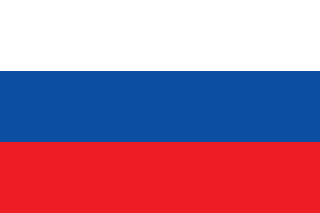
The (First) Slovak Republic, otherwise known as the Slovak State, was a partially-recognized client state of Nazi Germany which existed between 14 March 1939 and 4 April 1945 after abandoning Czechoslovakia to be annexed by Germany. The Slovak part of Czechoslovakia declared independence with German support one day before the German occupation of Bohemia and Moravia. The Slovak Republic controlled the majority of the territory of present-day Slovakia but without its current southern parts, which were ceded by Czechoslovakia to Hungary in 1938. It was the first time in history that Slovakia had been a formally independent state.
In law, coming into force or entry into force is the process by which legislation, regulations, treaties and other legal instruments come to have legal force and effect. The term is closely related to the date of this transition. The point at which such instrument comes into effect may be set out in the instrument itself, or after the lapse of a certain period, or upon the happening of a certain event, such as a proclamation or an objective event, such as the birth, marriage, reaching a particular age or death of a certain person. On rare occasions, the effective date of a law may be backdated to a date before the enactment.
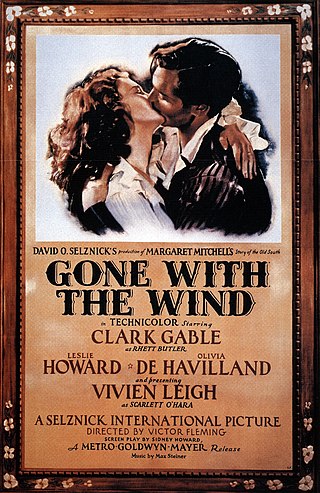
Gone with the Wind is a 1939 American epic historical romance film adapted from the 1936 novel by Margaret Mitchell. The film was produced by David O. Selznick of Selznick International Pictures and directed by Victor Fleming. Set in the American South against the backdrop of the American Civil War and the Reconstruction era, the film tells the story of Scarlett O'Hara, the strong-willed daughter of a Georgia plantation owner, following her romantic pursuit of Ashley Wilkes, who is married to his cousin, Melanie Hamilton, and her subsequent marriage to Rhett Butler.
The New Year Honours is a part of the British honours system, with New Year's Day, 1 January, being marked by naming new members of orders of chivalry and recipients of other official honours. A number of other Commonwealth realms also mark this day in this way.

Axis & Allies Miniatures is a miniature wargaming system including both a rule set and a line of 1/100 scale miniature armor collectible miniatures. The game is set in the World War II era with units representing individual vehicles and artillery or squads of infantry. The system was first released in 2005 and was produced by Avalon Hill, a division of the game company Wizards of the Coast, which itself is a subsidiary of Hasbro.

The Soviet invasion of Poland was a military conflict by the Soviet Union without a formal declaration of war. On 17 September 1939, the Soviet Union invaded Poland from the east, 16 days after Nazi Germany invaded Poland from the west. Subsequent military operations lasted for the following 20 days and ended on 6 October 1939 with the two-way division and annexation of the entire territory of the Second Polish Republic by Nazi Germany and the Soviet Union. This division is sometimes called the Fourth Partition of Poland. The Soviet invasion of Poland was indirectly indicated in the "secret protocol" of the Molotov–Ribbentrop Pact signed on 23 August 1939, which divided Poland into "spheres of influence" of the two powers. German and Soviet cooperation in the invasion of Poland has been described as co-belligerence.
The 1939 New York Yankees season was the team's 37th season. The team finished with a record of 106–45, winning their 11th pennant, finishing 17 games ahead of the Boston Red Sox. New York was managed by Joe McCarthy. The Yankees played their home games at Yankee Stadium. In the World Series, they beat the Cincinnati Reds in four games. As the Yankees had won each World Series dating back to 1936, this marked the first time any team had won four consecutive World Series. This was the first season for the Yankee's radio gameday broadcasts.
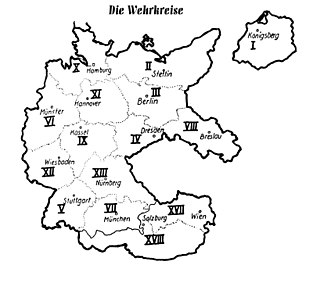
The military districts, also known in some English-language publications by their German name as Wehrkreise, were administrative territorial units in Nazi Germany before and during World War II. The task of military districts was the organization and the handling of reinforcements and resupplies for local military units. The Replacement Army (Ersatzheer) managed the districts. Responsibilities such as training, conscription, supply, and equipment were entrusted to the Ersatzheer.
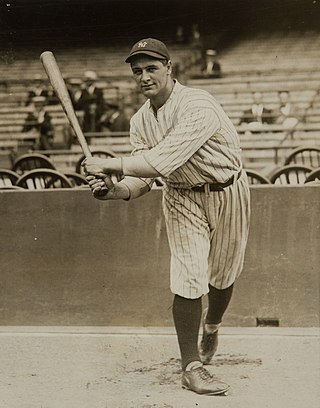
Henry Louis Gehrig was an American professional baseball first baseman who played 17 seasons in Major League Baseball (MLB) for the New York Yankees (1923–1939). Gehrig was renowned for his prowess as a hitter and for his durability, which earned him his nickname "the Iron Horse". He is widely regarded as one of the greatest baseball players of all time. He was an All-Star seven consecutive times, a Triple Crown winner once, an American League (AL) Most Valuable Player twice, and a member of six World Series champion teams. He had a career .340 batting average, .632 slugging average, and a .447 on base average. He hit 493 home runs and had 1,995 runs batted in (RBI). He still has the highest ratio of runs scored plus runs batted in per 100 plate appearances (35.08) and per 100 games (156.7) among Hall of Fame players. In 1939, he was elected to the Baseball Hall of Fame and was the first MLB player to have his uniform number (4) retired by a team.

An election was held on November 7, 1939 for the members of the New York City Council. Although the results of the election were not in by the next day, The Brooklyn Citizen was willing to predict that all the candidates endorsed by Judge Samuel Seabury and Mayor Fiorello H. La Guardia were defeated as they had been in the other municipal contests that day, due in large part to the domestic popularity of President Franklin D. Roosevelt. The reduced turnout compared to 1937 threatened to wipe out at least 9 of the Council's then-26 seats, given that 75,000 votes were required for each seat.













